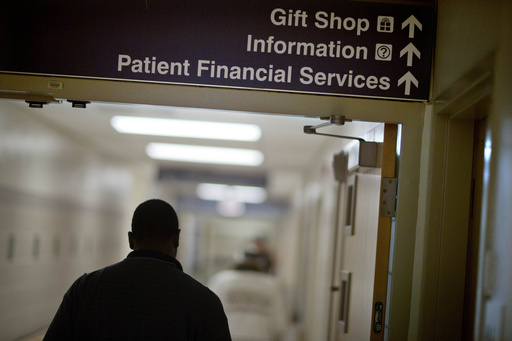
Many individuals across the United States dealing with high-deductible health insurance policies encounter a harsh truth each new year.
At the beginning of the year, these deductibles, which often amount to thousands of dollars, reset, requiring patients to cover substantial medical bills before most of their insurance coverage kicks in.
This financial burden can be especially challenging for those suffering from chronic illnesses like cancer, who may have reached their deductible limits the previous year only to start over again in January.
While utilizing tax-exempt accounts to save money can alleviate some of this strain, those without such options often struggle to navigate the financial landscape.
Despite these challenges, advocates for patients suggest effective strategies to better manage healthcare costs.
Understanding the potential financial implications of a high-deductible insurance plan is crucial.
Patients should familiarize themselves with the specifics of their deductibles, as these can often be complex.
Many plans feature different deductibles for individuals and families, meaning a person could meet their individual limit but still need to address the family deductible when seeking care.
There might also be separate deductibles for prescription medications.
Moreover, after meeting the deductible, patients typically continue to incur costs through coinsurance, which is a percentage of the bill still owed until reaching the annual out-of-pocket maximum.
“Many individuals are unaware that they will still incur coinsurance fees even after their deductible is met,” advises Nicole Broadhurst, CEO of Tennessee Health Advocates, an organization dedicated to assisting patients with medical billing issues.
The financial challenges can escalate if patients seek care from providers outside of their insurer’s network, making it imperative to verify that a doctor is in-network prior to making an appointment.
Another essential step involves meticulously reviewing medical invoices for potential errors.
Mistakes can easily occur, such as incorrect billing codes or sending bills before insurance notifications are resolved.
For emergency services, patients should ensure that their bills comply with the No Surprises Act, which guarantees that patients receive in-network care without unexpected charges for most emergency treatments.
Additionally, numerous organizations exist to assist individuals struggling with medical bills.
Among them are Broadhurst’s Tennessee Health Advocates and the Patient Advocate Foundation, a nonprofit with an online resource directory that offers help.
If confronted with an overwhelming bill, it may be worth looking into financial assistance.
Some healthcare facilities extend aid to patients with incomes up to six figures.
Persistence is key when pursuing help, as applications may be denied due to simple errors.
It is also advisable to inquire whether hospitals or healthcare providers would permit no-interest payment plans.
This time of year is particularly suitable for scheduling covered routine care.
Annual check-ups and certain preventive measures should typically be covered, irrespective of the deductible limits.
Broadhurst recommends obtaining these evaluations early in the year.
If any issues arise during a check-up that requires treatment, individuals will have the remainder of the year to arrange for potential payments.
Conversely, if no health concerns are found, patients may have the opportunity to save money for possible deductible payments later in the year.

